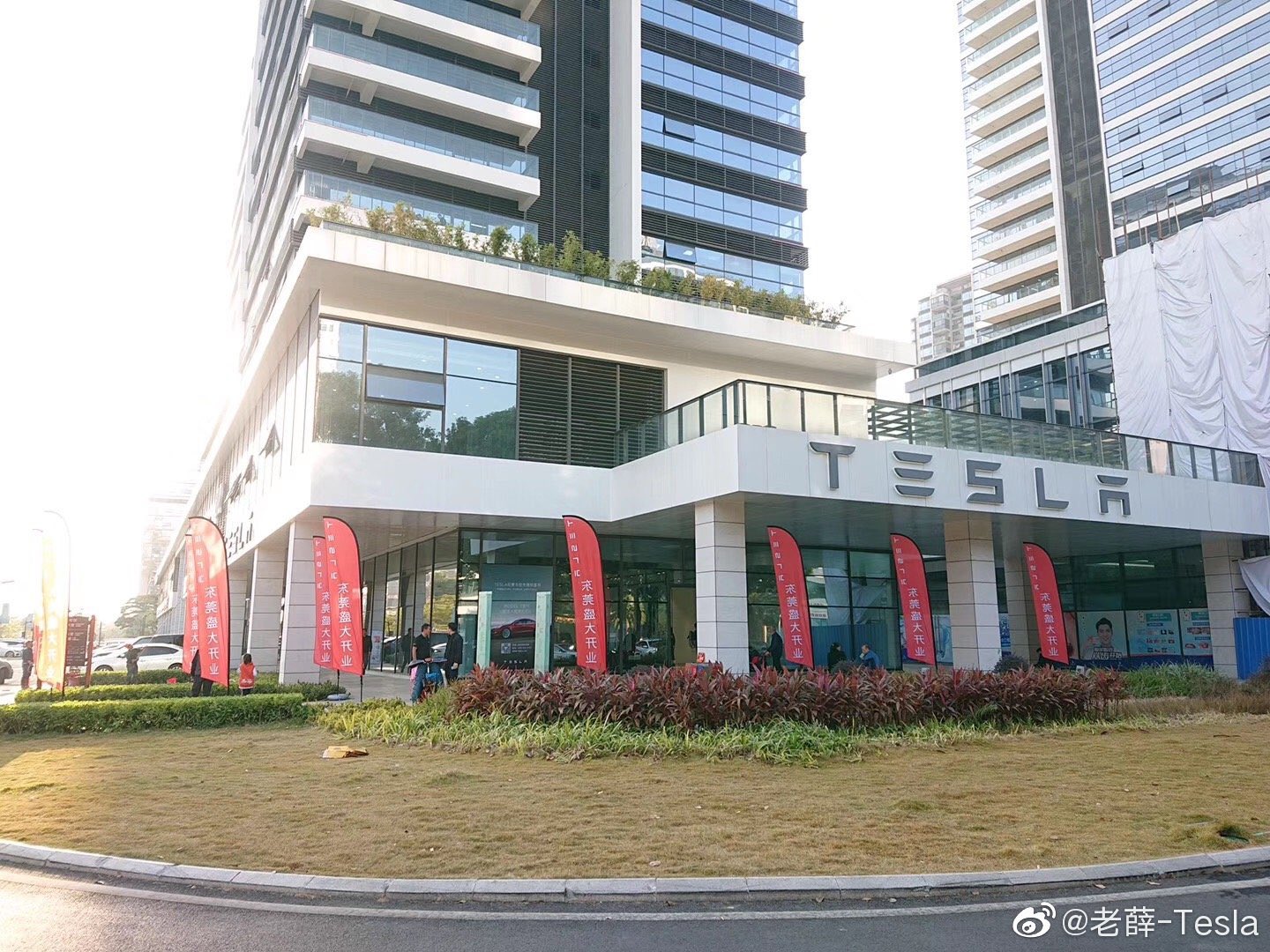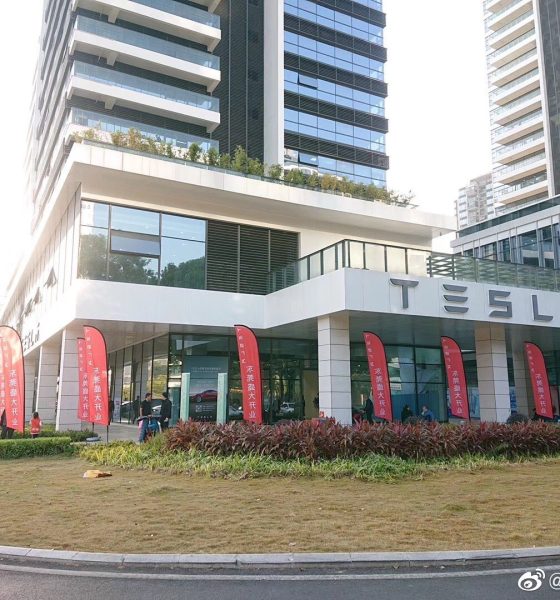

News
Tesla reopens Wuhan store as China regains footing after COVID-19 outbreak
The Tesla Store in Wuhan, China, the city known as the center of the Chinese COVID-19 pandemic, officially resumed business on March 30 after a two-month closure.
Vice President of Tesla China Grace Tao shared the update on Weibo around lunchtime in China on Monday. The store located at 690 Jiefang Road in Wuhan at the International Plaza was shut down in early February after COVID-19 flooded through the Chinese city of over 11 million people. Tesla decided to close all of its retail locations in mainland China on February 6.
Tao shared with her followers that, “I received a video from my colleague in Wuhan before the meeting in the morning, and the Guoguang store was officially resumed. Wuhan friends went out to work for the first time in two months.”

This marks a significant turn of events for the Chinese city that has indicated its death toll from the pandemic could be in the tens of thousands based on local cremation figures, according to Newsweek. China’s number of infected was once exponentially higher than any other country in the world. However, a plateauing in the number of cases thanks to a nationwide quarantine effort from residents has allowed retail locations in some areas to resume business.
Wuhan has allowed many businesses to reopen amidst the virus, as authorities lifted the mandatory quarantine that lasted over two months. Wuhan’s government has permitted retail locations and malls to resume business to revive the world’s second-largest economy.
While residents are now being allowed to go out and shop in local malls and shopping centers, they are required to stay within the Hubei province that the city of Wuhan is located in until April 8.
Virtually every company in the world has felt the economic effects of the COVID-19 virus, and Tesla is undoubtedly no exception. The electric car maker has made every effort to keep customers and employees in China safe.
Tesla implemented home deliveries, unlimited Supercharging, and webcam-based customer service at many of its Chinese stores. This allowed customers to continue taking delivery of their vehicles or allowed new customers to ask questions to Tesla advisors at the retail location nearest to their residence.
For employees in China, Tesla took several measures to ensure safety and health for its workers. After the Giga Shanghai production facility was forced to close down for an extended period after the Chinese New Year, it reopened on February 10. Employees at the first Gigafactory outside of the United States were shuttled to work in large buses. Still, the intense spread of the virus caused the company to explore several additional measures that included daily disinfection of the facility, and body temperature checks before employees clocked in for their shift.
The reopening of Tesla’s retail location in Wuhan brings economic support to the employees of the store, and the company overall. While Tesla has implemented several ways to limit the damage that the pandemic has done to its business in China, face-to-face interactions at the Tesla store can officially resume.

News
Tesla FSD fleet is nearing 7 billion total miles, including 2.5 billion city miles
As can be seen on Tesla’s official FSD webpage, vehicles equipped with the system have now navigated over 6.99 billion miles.

Tesla’s Full Self-Driving (Supervised) fleet is closing in on almost 7 billion total miles driven, as per data posted by the company on its official FSD webpage.
These figures hint at the massive scale of data fueling Tesla’s rapid FSD improvements, which have been quite notable as of late.
FSD mileage milestones
As can be seen on Tesla’s official FSD webpage, vehicles equipped with the system have now navigated over 6.99 billion miles. Tesla owner and avid FSD tester Whole Mars Catalog also shared a screenshot indicating that from the nearly 7 billion miles traveled by the FSD fleet, more than 2.5 billion miles were driven inside cities.
City miles are particularly valuable for complex urban scenarios like unprotected turns, pedestrian interactions, and traffic lights. This is also the difference-maker for FSD, as only complex solutions, such as Waymo’s self-driving taxis, operate similarly on inner-city streets. And even then, incidents such as the San Francisco blackouts have proven challenging for sensor-rich vehicles like Waymos.
Tesla’s data edge
Tesla has a number of advantages in the autonomous vehicle sector, one of which is the size of its fleet and the number of vehicles training FSD on real-world roads. Tesla’s nearly 7 billion FSD miles then allow the company to roll out updates that make its vehicles behave like they are being driven by experienced drivers, even if they are operating on their own.
So notable are Tesla’s improvements to FSD that NVIDIA Director of Robotics Jim Fan, after experiencing FSD v14, noted that the system is the first AI that passes what he described as a “Physical Turing Test.”
“Despite knowing exactly how robot learning works, I still find it magical watching the steering wheel turn by itself. First it feels surreal, next it becomes routine. Then, like the smartphone, taking it away actively hurts. This is how humanity gets rewired and glued to god-like technologies,” Fan wrote in a post on X.
News
Tesla starts showing how FSD will change lives in Europe
Local officials tested the system on narrow country roads and were impressed by FSD’s smooth, human-like driving, with some calling the service a game-changer for everyday life in areas that are far from urban centers.

Tesla has launched Europe’s first public shuttle service using Full Self-Driving (Supervised) in the rural Eifelkreis Bitburg-Prüm region of Germany, demonstrating how the technology can restore independence and mobility for people who struggle with limited transport options.
Local officials tested the system on narrow country roads and were impressed by FSD’s smooth, human-like driving, with some calling the service a game-changer for everyday life in areas that are far from urban centers.
Officials see real impact on rural residents
Arzfeld Mayor Johannes Kuhl and District Administrator Andreas Kruppert personally tested the Tesla shuttle service. This allowed them to see just how well FSD navigated winding lanes and rural roads confidently. Kruppert said, “Autonomous driving sounds like science fiction to many, but we simply see here that it works totally well in rural regions too.” Kuhl, for his part, also noted that FSD “feels like a very experienced driver.”
The pilot complements the area’s “Citizen Bus” program, which provides on-demand rides for elderly residents who can no longer drive themselves. Tesla Europe shared a video of a demonstration of the service, highlighting how FSD gives people their freedom back, even in places where public transport is not as prevalent.
What the Ministry for Economic Affairs and Transport says
Rhineland-Palatinate’s Minister Daniela Schmitt supported the project, praising the collaboration that made this “first of its kind in Europe” possible. As per the ministry, the rural rollout for the service shows FSD’s potential beyond major cities, and it delivers tangible benefits like grocery runs, doctor visits, and social connections for isolated residents.
“Reliable and flexible mobility is especially vital in rural areas. With the launch of a shuttle service using self-driving vehicles (FSD supervised) by Tesla in the Eifelkreis Bitburg-Prüm, an innovative pilot project is now getting underway that complements local community bus services. It is the first project of its kind in Europe.
“The result is a real gain for rural mobility: greater accessibility, more flexibility and tangible benefits for everyday life. A strong signal for innovation, cooperation and future-oriented mobility beyond urban centers,” the ministry wrote in a LinkedIn post.
News
Tesla China quietly posts Robotaxi-related job listing
Tesla China is currently seeking a Low Voltage Electrical Engineer to work on circuit board design for the company’s autonomous vehicles.

Tesla has posted a new job listing in Shanghai explicitly tied to its Robotaxi program, fueling speculation that the company is preparing to launch its dedicated autonomous ride-hailing service in China.
As noted in the listing, Tesla China is currently seeking a Low Voltage Electrical Engineer to work on circuit board design for the company’s autonomous vehicles.
Robotaxi-specific role
The listing, which was shared on social media platform X by industry watcher @tslaming, suggested that Tesla China is looking to fill the role urgently. The job listing itself specifically mentions that the person hired for the role will be working on the Low Voltage Hardware team, which would design the circuit boards that would serve as the nervous system of the Robotaxi.
Key tasks for the role, as indicated in the job listing, include collaboration with PCB layout, firmware, mechanical, program management, and validation teams, among other responsibilities. The role is based in Shanghai.
China Robotaxi launch
China represents a massive potential market for robotaxis, with its dense urban centers and supportive policies in select cities. Tesla has limited permission to roll out FSD in the country, though despite this, its vehicles have been hailed as among the best in the market when it comes to autonomous features. So far, at least, it appears that China supports Tesla’s FSD and Robotaxi rollout.
This was hinted at in November, when Tesla brought the Cybercab to the 8th China International Import Expo (CIIE) in Shanghai, marking the first time that the autonomous two-seater was brought to the Asia-Pacific region. The vehicle, despite not having a release date in China, received a significant amount of interest among the event’s attendees.








